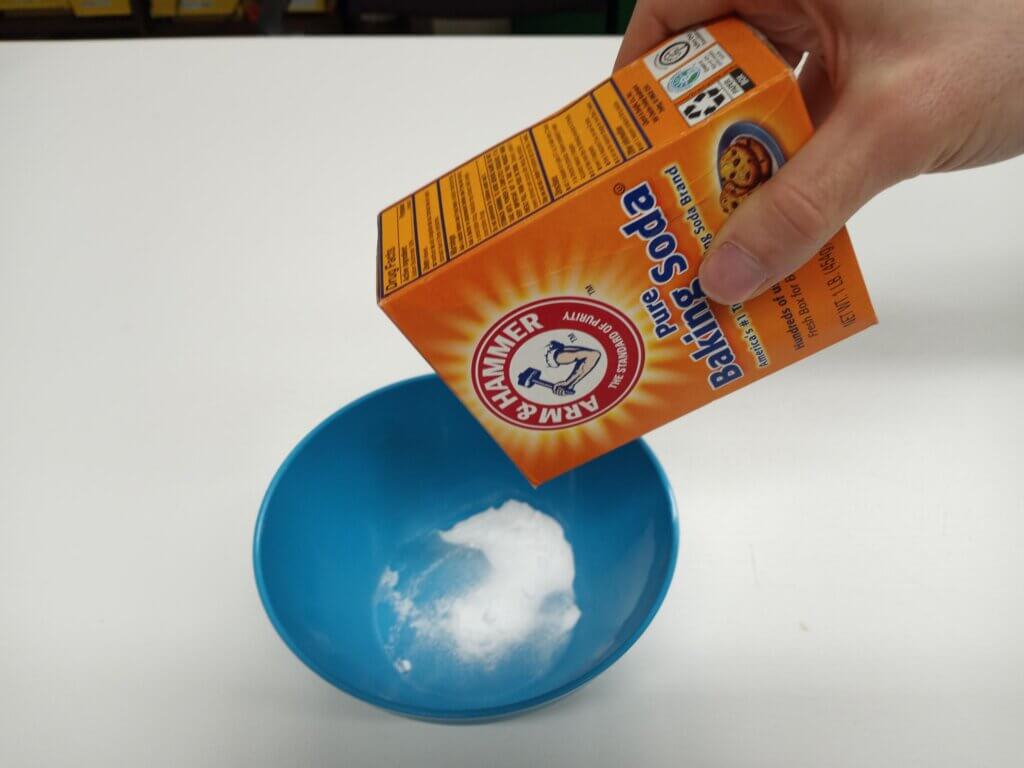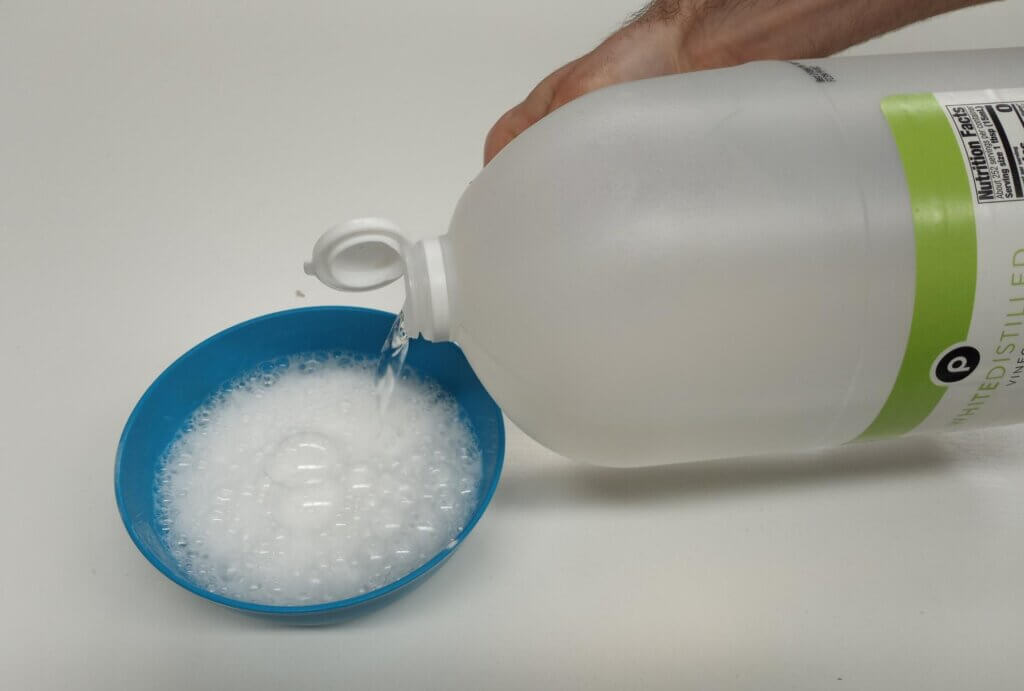What’s causing this chemical reaction?
Try this experiment at home and learn what causes a chemical reaction! A chemical reaction is when one or more substances react to form an entirely new substance with different properties.
There are 5 signs that a chemical reaction has occurred. These signs are easy to remember…just think about F.A.R.T.S. To identify whether a chemical reaction has occurred, at least one of these 5 changes:
- Fizzes: Did the reaction produce bubbles or gas?
- Aroma: Did the reaction produce a smell?
- Re-color: Did the reaction produce a new color?
- Temperature: Did the reaction produce a temperature change or release light?
- New Substance: Did the reaction produce a new substance like water or a solid?
Ready to make your own? Follow the written steps below!
Materials you will need:
- Vinegar
- Baking soda
- Any container (an empty plastic water bottle or small bowl works best)
- A tray or something to catch the mess
Directions:
Step 1:
Pour some baking soda into the container (you don't need a lot)

Step 2:
Carefully pour some vinegar onto the baking soda and watch it fizz. You can pour more vinegar to make it erupt again until all the baking soda has dissolved.
Step 3:
Clean up, and if you want, try again.

The Science of Baking Soda and Vinegar
- Mixing vinegar and baking soda causes an acid-base reaction that releases carbon dioxide.
- The chemical equation looks like this: NaHCO3(s) + CH3COOH(l) → CO2(g) + H2O(l) + Na+(aq) + CH3COO–(aq)
- This is an example of an acid-base neutralization reaction, where the reaction forms water and a salt as products.
Expand on This Activity:
- Ask Your Scientist the Following Questions:
- Which of the changes from F.A.R.T.S. did you notice in the reaction?
- What else produces carbon dioxide (CO2)?
- Keep Experimenting:
- If you have food coloring, you can add a few drops to your baking soda before you pour the vinegar to get a colorful eruption.
- You often see this reaction used to demonstrate a volcano erupting. Can you make a volcano out of things you have at home? You could use clay, papier mache, you can even make one outside out of dirt (just watch out for ants!)
